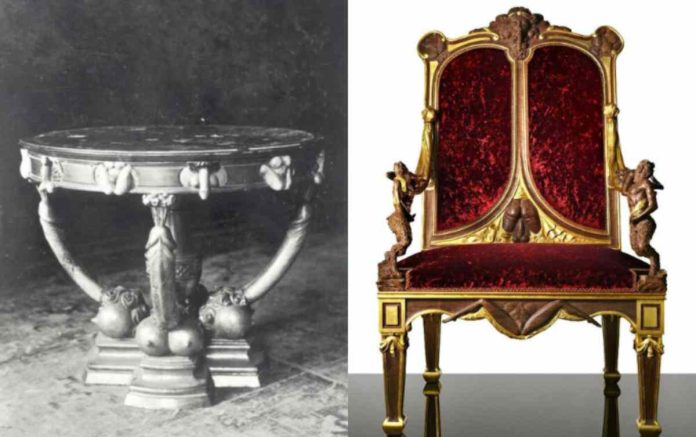Catherine II, widely known as Catherine the Great, ruled Russia from 1762 to 1796. As one of the most influential female rulers in history, she not only expanded the Russian Empire but also transformed its cultural and artistic landscape. Among her many contributions was her patronage of decorative arts—particularly furniture design. Today, “Catherine the Great furniture” refers to the luxurious and elegant styles that flourished under her reign, blending Russian craftsmanship with Western European influences.
Table of Contents
The Artistic Vision of Catherine the Great
Catherine was deeply inspired by the European Enlightenment and sought to align Russia with Western cultural norms. Her court became a hub of artistic innovation, and she commissioned works from French, Italian, German, and English artisans. Furniture design during her reign became a blend of imperial grandeur and Enlightenment sensibilities—both functional and symbolic.
To Catherine, furniture was not merely utilitarian—it was an expression of power, sophistication, and cultural identity. As such, her palaces were filled with pieces that reflected classical beauty, technical mastery, and intellectual taste.
Characteristics of Catherine the Great Furniture
The furniture associated with Catherine the Great best describe as a synthesis of Rococo, Neoclassical, and early Empire styles, gradually transitioning from ornate decoration to more restrained, classical aesthetics.
- Materials and Craftsmanship
- Woods: High-quality materials like mahogany, walnut, and exotic veneers.
- Inlays: Marquetry (decorative inlay work) using contrasting woods and mother-of-pearl.
- Finishes: Polished surfaces with gold leaf, lacquer, or hand-painted elements.
- Decorative Elements
- Ormolu Mounts: Gilded bronze accents and hardware were common on desks, dressers, and cabinets.
- Motifs: Laurel wreaths, acanthus leaves, classical columns, and mythological figures.
- Upholstery: Rich fabrics such as silk, velvet, and brocade, often in jewel tones.
- Functional Forms
- Elegant chairs, writing desks, mirrored vanities, and commodes were not only decorative but designed for daily use in palatial life.
Famous Collections and Palaces
Several Russian palaces still house original pieces from Catherine’s era. The Winter Palace, now part of the Hermitage Museum, contains some of the finest examples of 18th-century Russian and European furniture. The Catherine Palace in Tsarskoye Selo also boasts beautifully restored rooms featuring period furnishings.
One standout is the Green Dining Room, designed by Scottish architect Charles Cameron, which includes classical Russian furniture inspired by ancient Roman design—a favorite theme of Catherine’s.
Collecting and Valuing Catherine the Great Furniture
Authentic pieces from Catherine’s reign are rare and extremely valuable. Museums and private collectors around the world compete for these artifacts due to their historical significance and unmatched craftsmanship.
What to Look For When Collecting
- Provenance: Documentation of ownership and origin is crucial.
- Quality: Handcrafted details, patina, and artisan marks indicate authenticity.
- Condition: Restorations should be professionally done and well-documented.
Prices at auctions like Sotheby’s or Christie’s can range from $10,000 to over $500,000, depending on rarity and condition.
Influence on Modern Design
While authentic Catherine-era furniture is out of reach for most, its influence is seen in modern neoclassical and baroque revival furniture. Designers draw inspiration from the symmetry, detailing, and elegance of Catherine’s time, especially in luxury and classical interiors.
Conclusion
Catherine the great furniture design is a testament to her visionary leadership and deep appreciation for the arts. Her support for fine craftsmanship and European artistry helped forge a unique Russian style that still captivates collectors, historians, and interior designers today. Whether you are a history buff, antique enthusiast, or someone passionate about interior design, studying the furniture from Catherine’s court offers a fascinating glimpse into one of history’s most culturally rich reigns.

